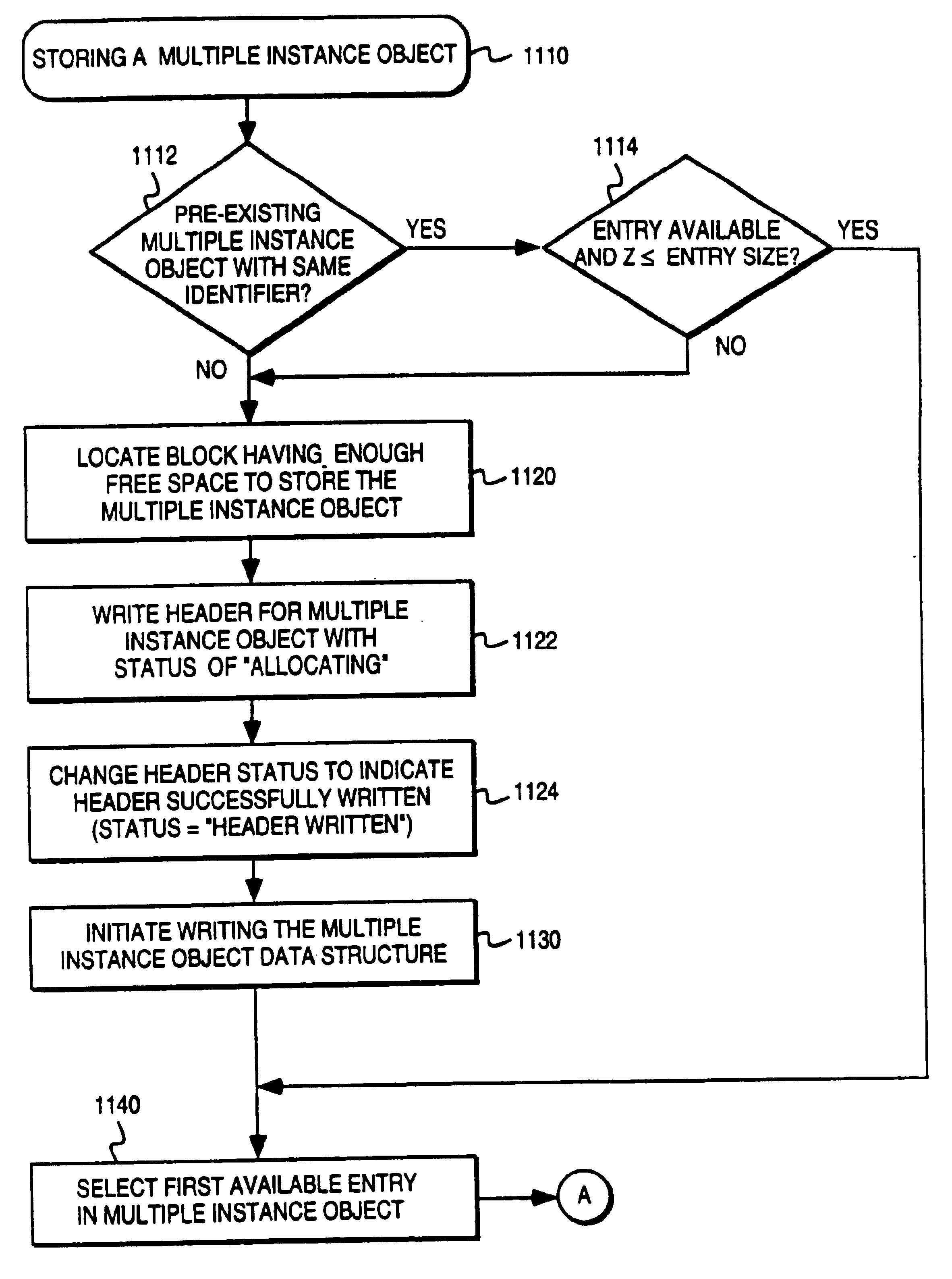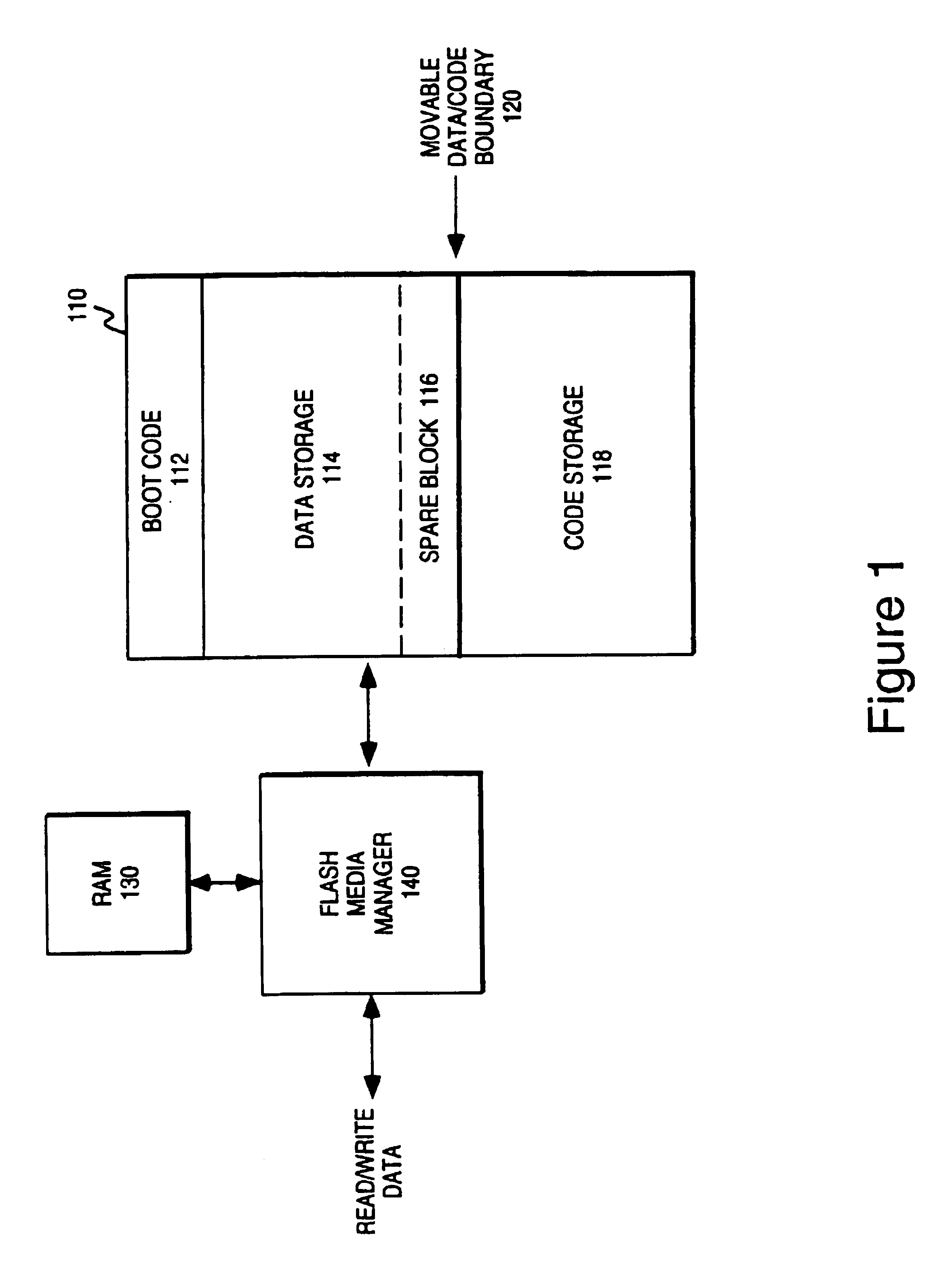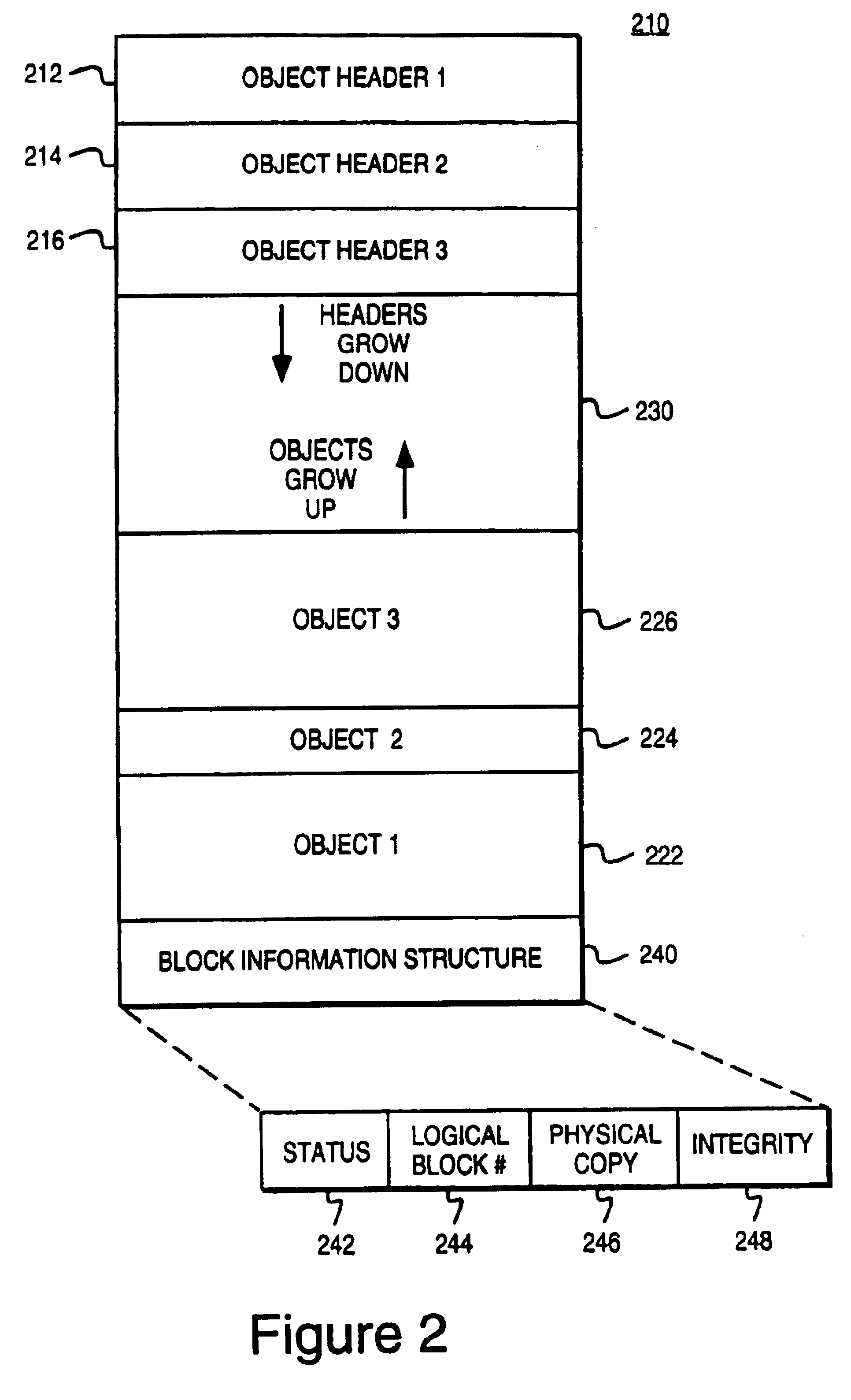Increased reliability of data stored on flash memory in applications sensitive to power-loss
a technology of flash memory and data storage, applied in the field of computer memory storage systems, can solve the problems of memory cells that cannot be re-programmed, memory cells cannot be erased, and the process of erasing, writing, etc., is relatively time-consuming
- Summary
- Abstract
- Description
- Claims
- Application Information
AI Technical Summary
Problems solved by technology
Method used
Image
Examples
Embodiment Construction
FIG. 1 illustrates the storage of both code and data in a monolithic nonvolatile memory device 110. In one embodiment, the nonvolatile memory comprises a plurality of individually erasable blocks. The amount of space allocated to the data and code portions may span one or more blocks as long as the data and code portion do not share a same block.
Nonvolatile memory device 110 has a boot code 112 portion, a data storage 114 portion, a spare block 116, and a code storage 118 portion. The spare block 116 is an actual physical block of the nonvolatile memory device. As will be described below, logical block numbers are used so that the spare block can be any physical block within the data portion 114.
Spare block 116 is used during the reclamation process to recover the valid contents of another block before erasing that other block to free up the space used by invalid contents. Due to the characteristics of flash memory and the relatively long time required to erase a block, superseding ...
PUM
 Login to View More
Login to View More Abstract
Description
Claims
Application Information
 Login to View More
Login to View More - R&D
- Intellectual Property
- Life Sciences
- Materials
- Tech Scout
- Unparalleled Data Quality
- Higher Quality Content
- 60% Fewer Hallucinations
Browse by: Latest US Patents, China's latest patents, Technical Efficacy Thesaurus, Application Domain, Technology Topic, Popular Technical Reports.
© 2025 PatSnap. All rights reserved.Legal|Privacy policy|Modern Slavery Act Transparency Statement|Sitemap|About US| Contact US: help@patsnap.com



